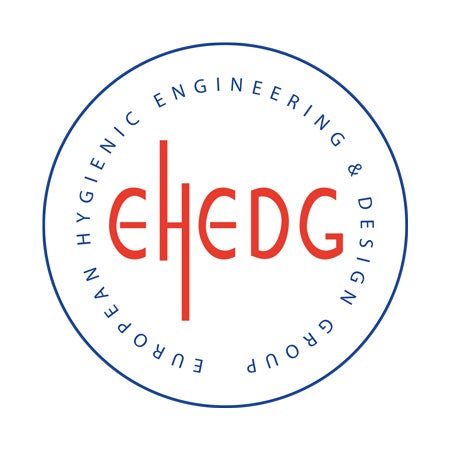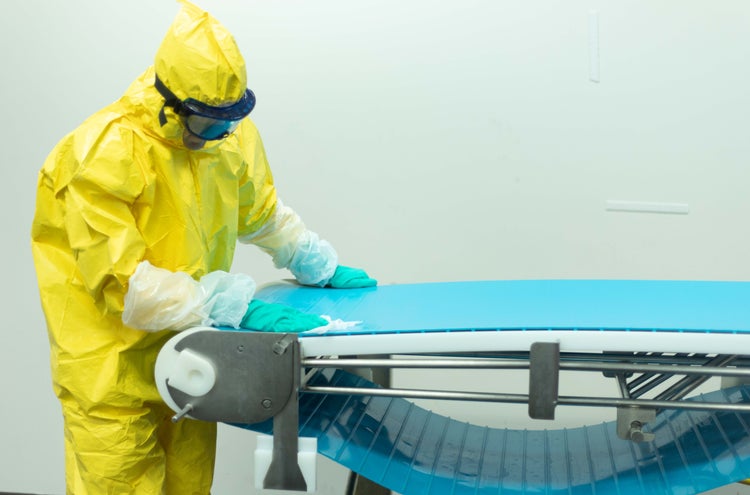EHEDG Guideline Document 52: Basic Principles of Cleaning and Disinfection in Food Manufacturing - an interview with Dirk Nikoleiski

EHEDG Working Group Cleaning and Disinfection, led by chair Dirk Nikoleiski, Regional Manager EMEA at Commercial Food Sanitation L.C.C, developed EHEDG Guideline Document 52, which was published in July 2021.
On a general note: how does cleaning and disinfection relate to hygienic design?
Dirk Nikoleiski: ‘It is not always sufficiently understood that cleaning and disinfection performance is strongly linked to hygienic design, while in fact they are two sides of the same coin. When companies are confronted with food quality or contamination issues, they tend to immediately point to cleaning practices, while the core of the problem often turns out to be related to the initial equipment design. Cleaning crews are often unjustly blamed for problems that are actually caused by engineers who integrated non-hygienic design components in machines. Whether you have hygienic design in place or not will greatly determine the options you have for cleaning, and vice-versa. When setting up a cleaning protocol to achieve acceptable cleaning results, the required cleaning regime will also determine the design of the equipment.’
How about the general industry knowledge of cleaning and disinfection?
‘It’s surprising to see that many food processing professionals still don’t seem to fully understand the basic principles of cleaning and disinfection. Companies may rely on what they’ve done for many years, maybe because they haven’t encountered many problems, or they simply rely on other people’s advice or experience, but often this does not address the actual fundamentals of cleaning and disinfection. With this guideline, we want to close this knowledge gap. Over the years EHEDG has published many technical guideline documents, but we didn’t develop a guideline that addresses the basic principles that play a role in effective cleaning and disinfection. We also wanted to place this topic in the context of hygienic design, because it goes hand in hand with cleaning and disinfection.’
How do the contents of this new EHEDG guideline document relate to the cleaning and disinfection requirements of the prerequisite programs that food processing companies have to deal with?
‘Actually, cleaning and disinfection are prerequisites as such, so they are always included in all recognized GFSI food safety standards; however, in those standards you’ll typically only find ‘what’ you have to do. Food manufacturers must develop cleaning and disinfection protocols detailing ‘how’ to do it. This is what our new guideline is for. This guideline doesn’t contain recipes for each individual application, but it should help the industry to make the right decisions when setting up cleaning protocols. It helps to build up a sound understanding of the basic principles to comply with prerequisite programs.’
What is the scope of the guideline and who is it for?
‘This guideline is of interest for all stakeholders involved in the food industry because it addresses the basic principles. We have tried to explain different methodologies, like the differences between wet and dry cleaning. The guideline also contains some fundamentals on soil and soil characteristics, contaminants, and cleaning programs. We have provided a holistic overview on cleaning and disinfection, and have tried to explain this in a broader scope, without going into too much detail, as it’s all about the basic principles.’
Another EHEDG guideline was published this year on Cleaning and Validation. Last year EHEDG published a guideline on Cleaning-in-Place (CIP). These guidelines all deal with cleaning. How do they relate to each other?
‘They all belong to the same EHEDG Cleaning and Disinfection Guideline Cluster, which contains all the basic principles of cleaning validation. EHEDG also plans to publish a new guideline on tank cleaning, which belongs to this cluster as well. Interestingly, the starting point of the EHEDG Guideline Document Basic Principles of Cleaning and Disinfection was the validation guide that EHEDG issued some years ago. At that time we realized that when we’re talking about cleaning validation we should also address cleaning and disinfection as such. So, yes, these are complementary documents that relate to each other. Besides the validation of the cleaning performance, the cleaning validation guideline document also includes new aspects like monitoring. It’s a very nice and comprehensive package.’
In EHEDG Guideline Document 52, you give a nice overview of the determining factors of effective cleaning and disinfection, along with some illustrations. Can you elaborate?
‘We included many illustrations, in order to help the readers to digest the information quickly. We’ve used some illustrations and publications from other sources, for example the Sinner Circle, which explains in a very easy to understand way the four parameters: chemical impact, mechanical impact, time, and temperature. These four parameters are interacting with each other, and to a certain extent can also compensate for each other. For example: when you lower the chemical concentration, you can balance this out by increasing the temperature, time, and mechanical action. This illustration helps you to understand the influence of these parameters on the cleaning efficacy. Other illustrations also include soil characteristics, hygienic design, and environmental impact, which may vary depending on the applied type of cleaning methodology.’
Who contributed to this EHEDG Guideline Document 52?
‘All stakeholders were represented. We’ve received valuable input from suppliers, producers of cleaning chemicals, and various cleaning services and cleaning solutions. Equipment manufacturers, food processors, researchers, and even retailers contributed to this guideline. And that is why I can confidently state that this guideline is not only valuable for food manufacturers. I had the honour to work with a team that was extremely engaged, that contributed actively to our discussions, which were sometimes controversial, but always productive. The result is substantial and we publish it with pride.’



